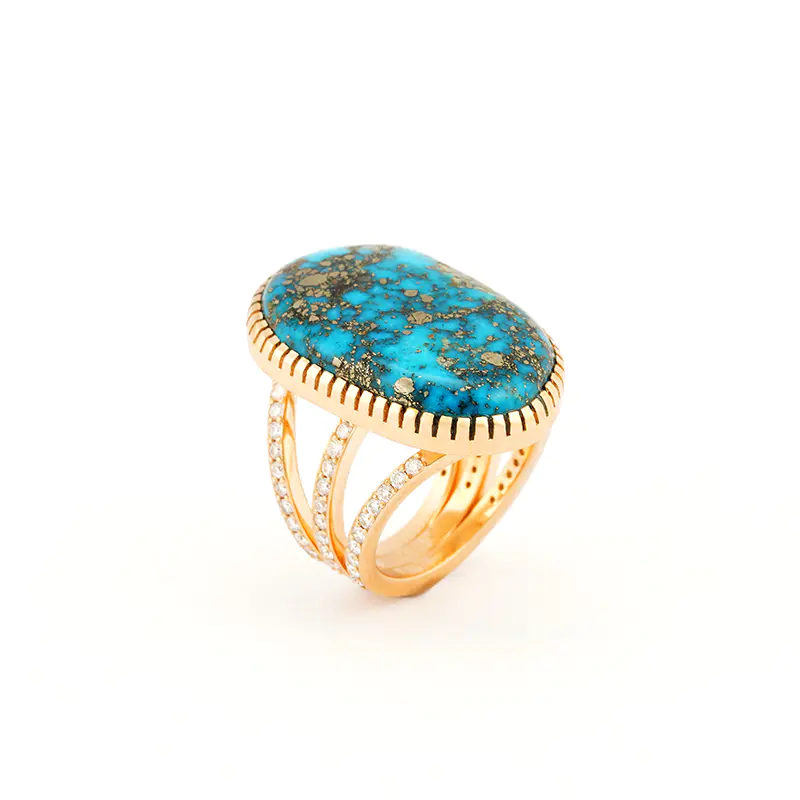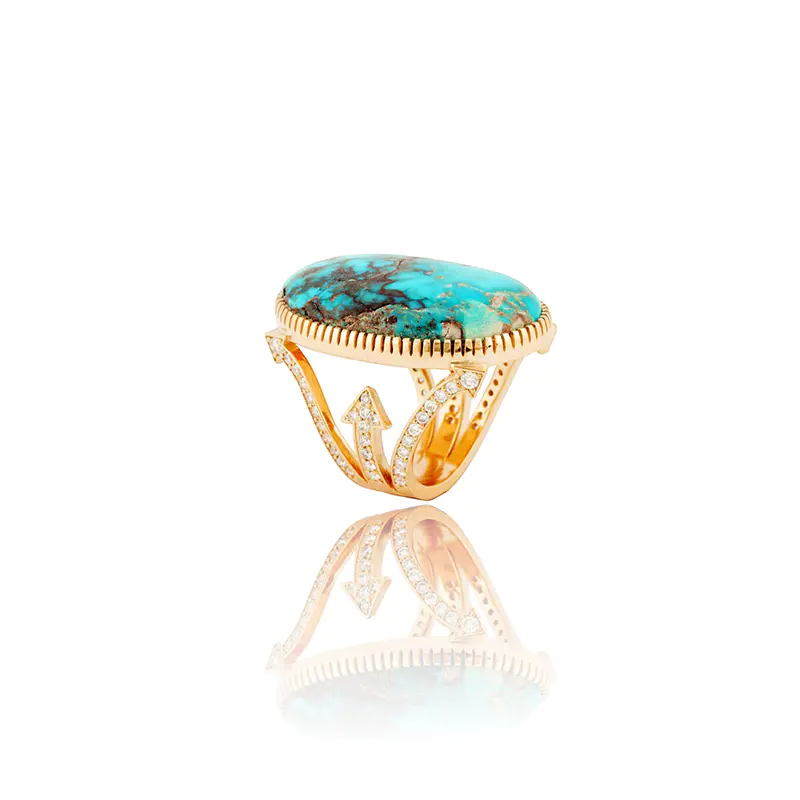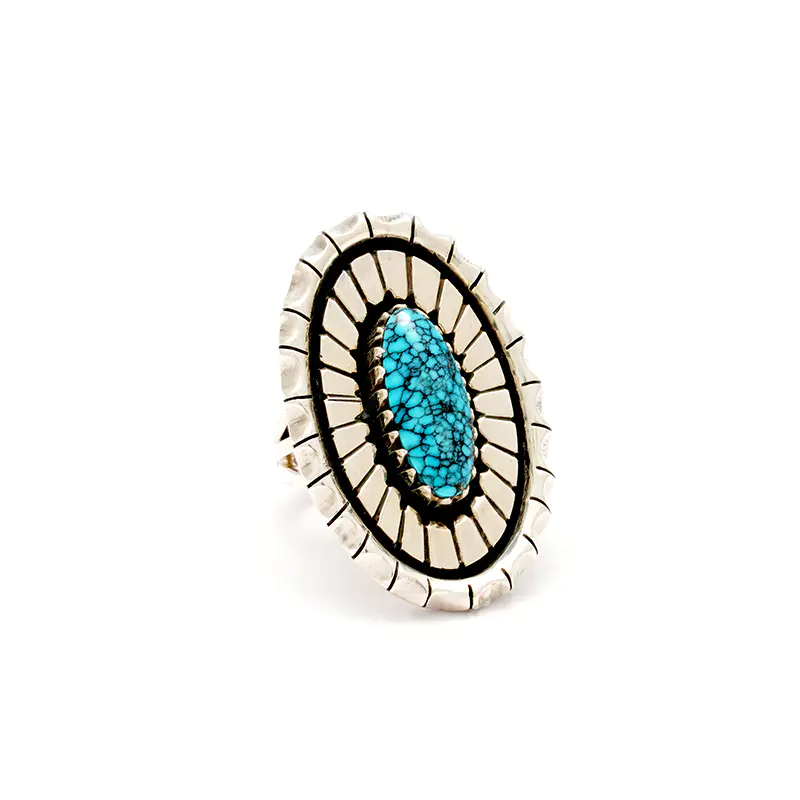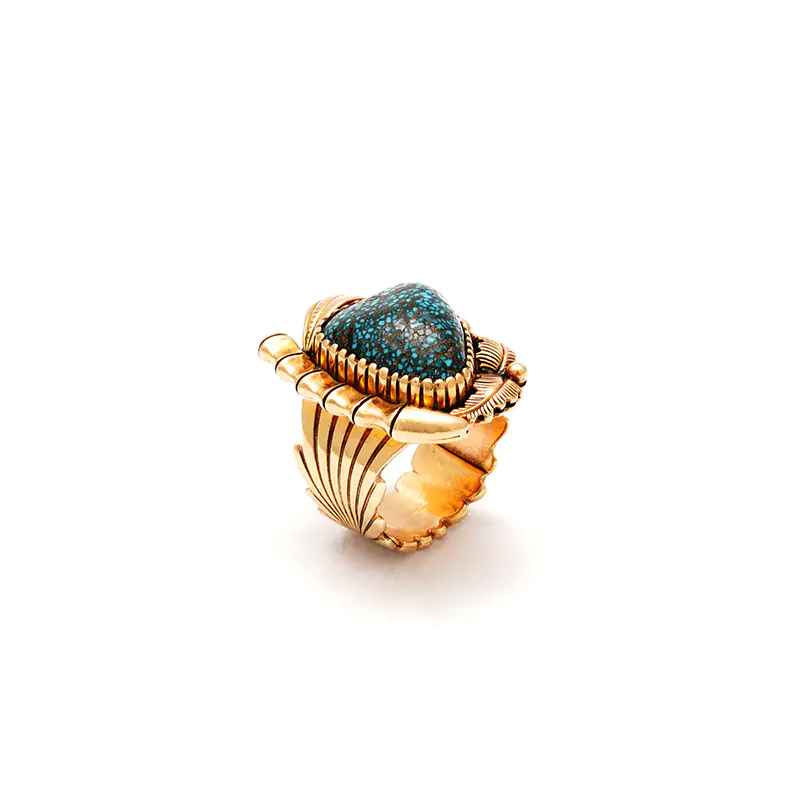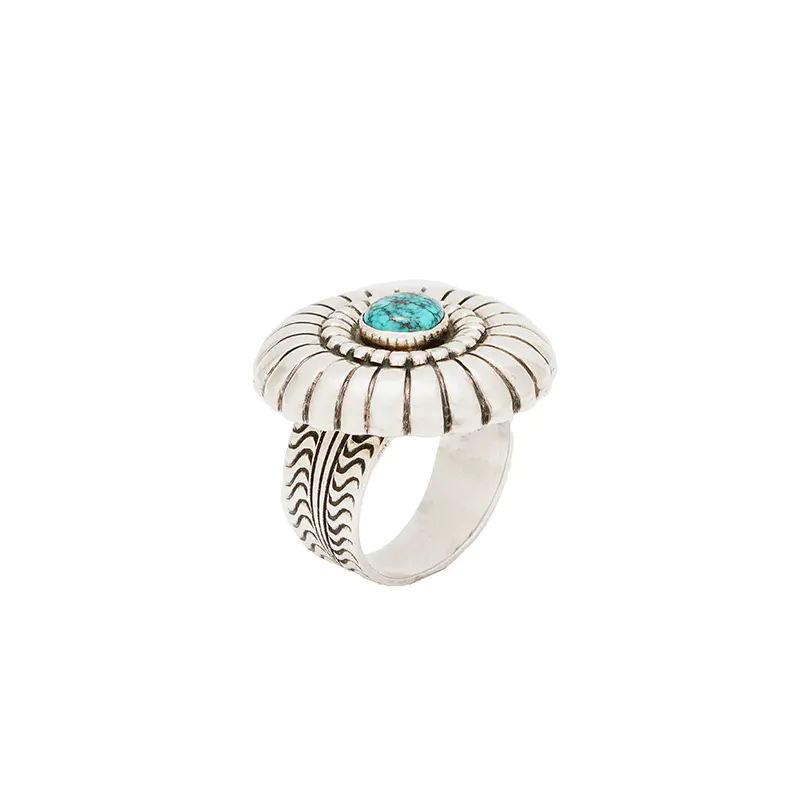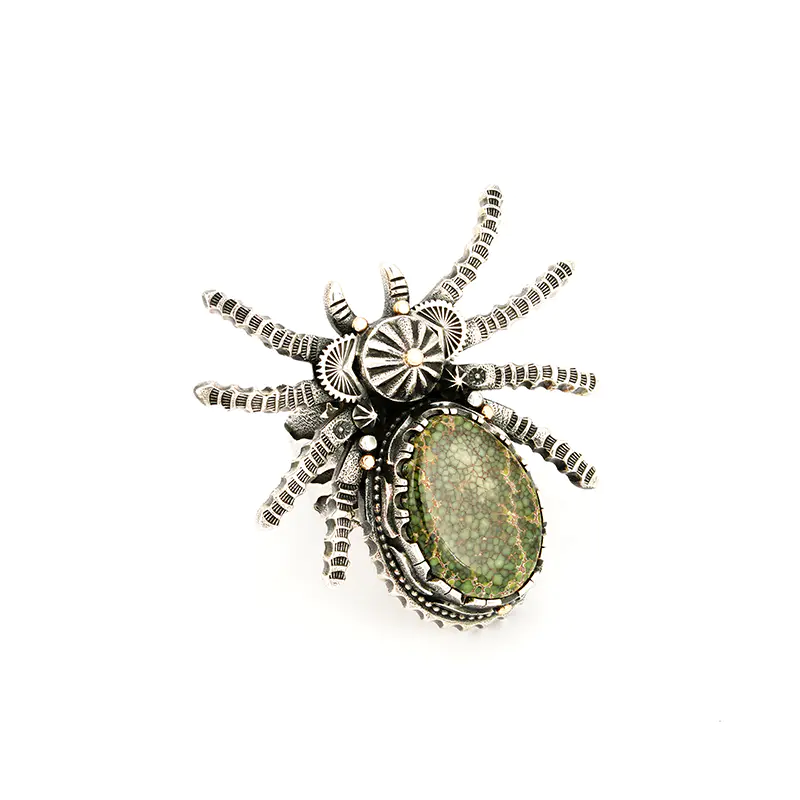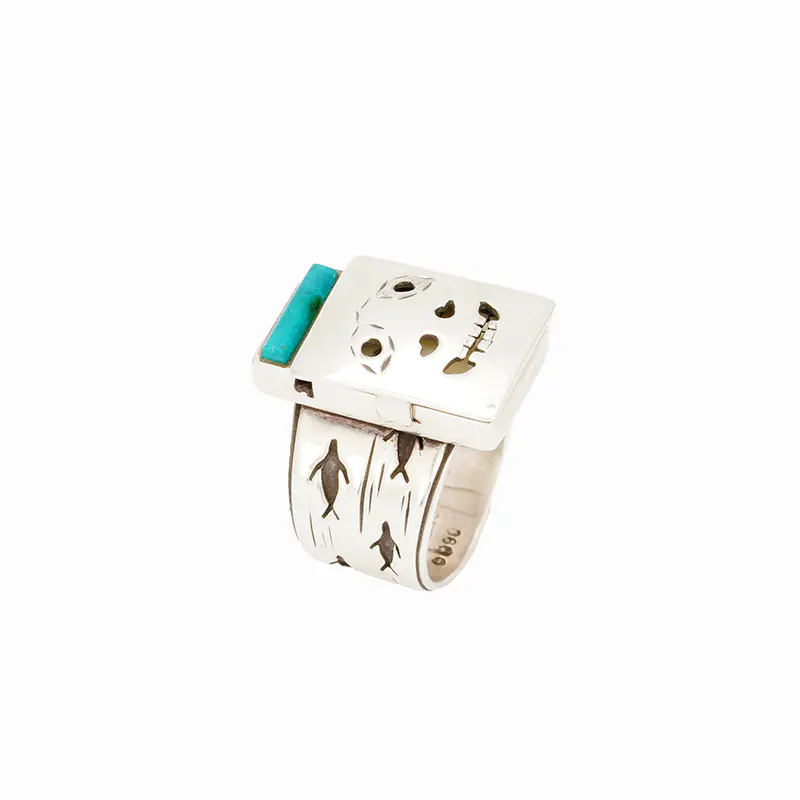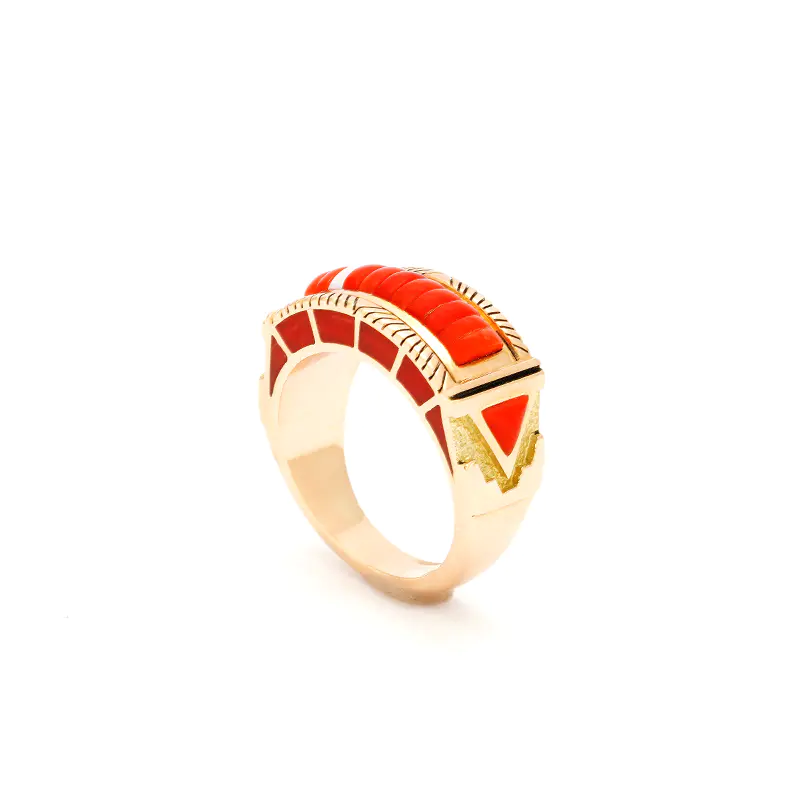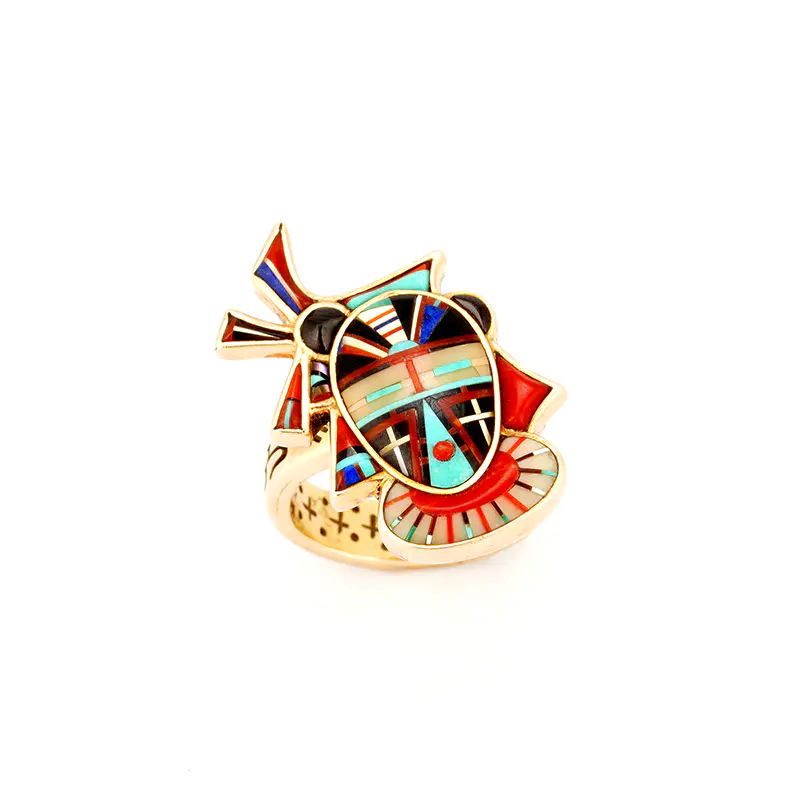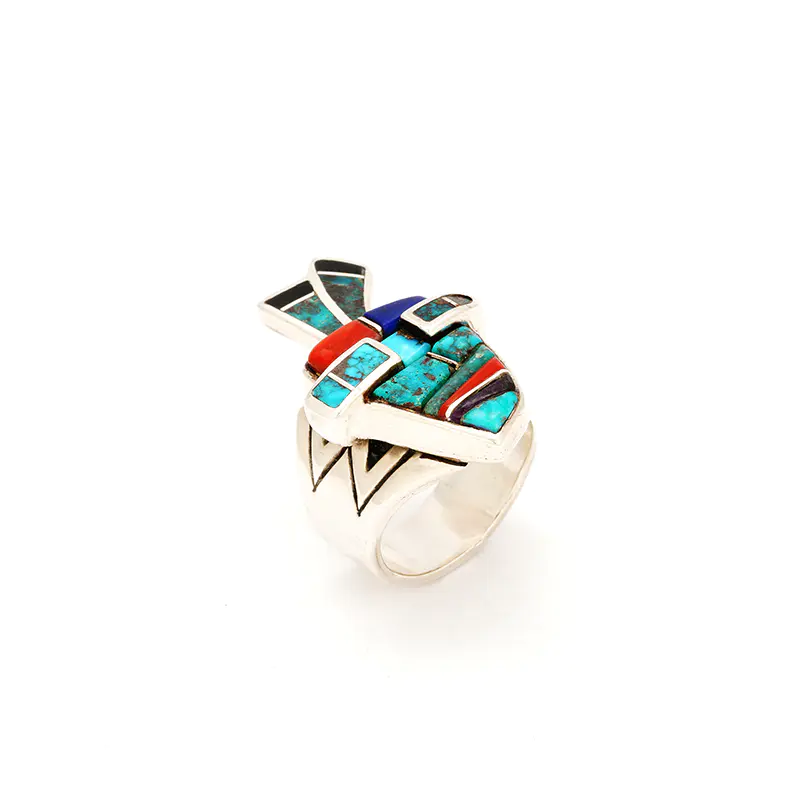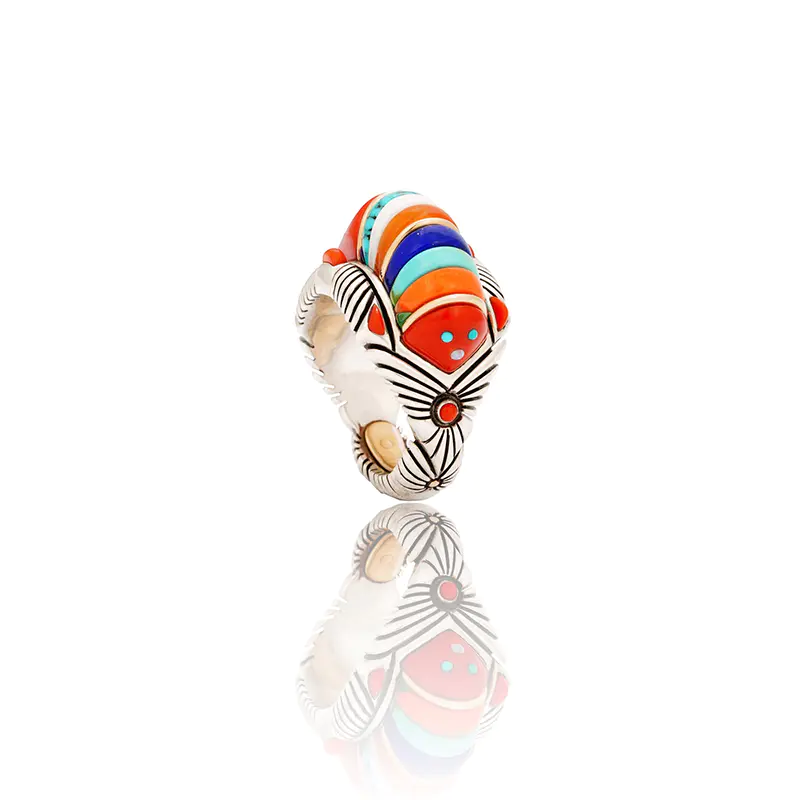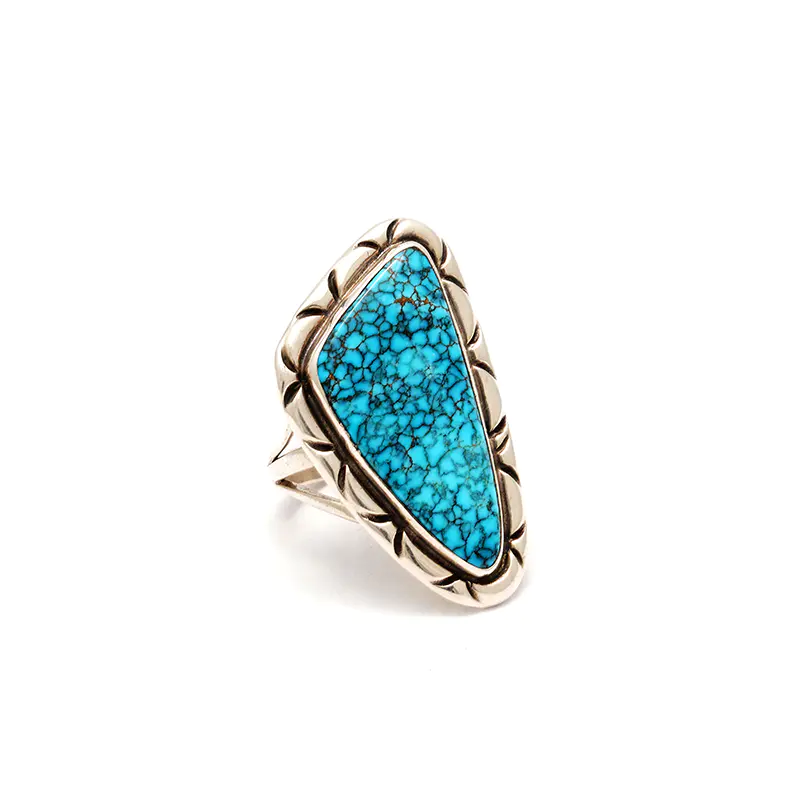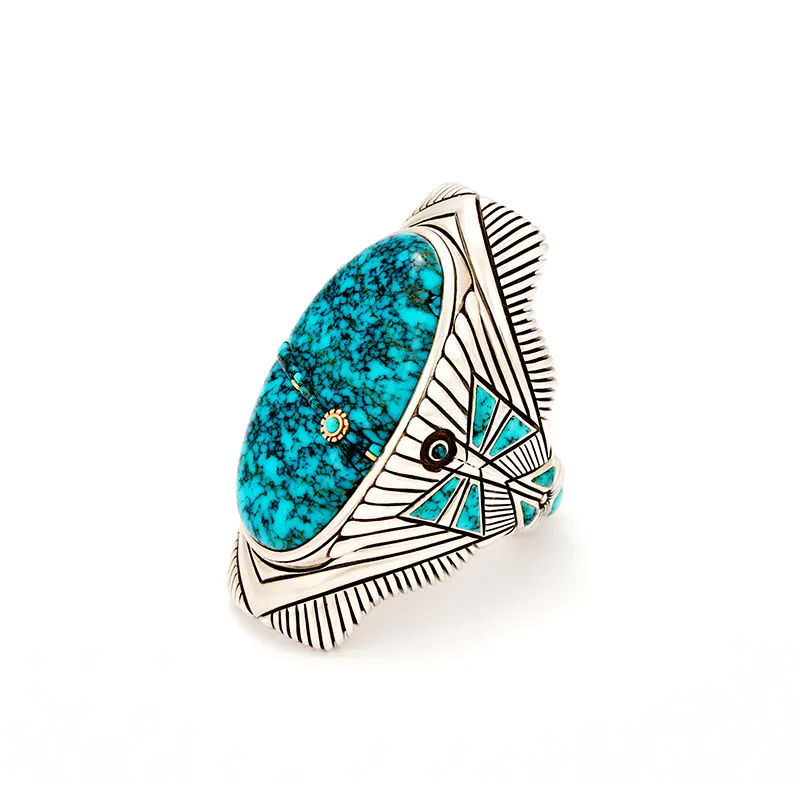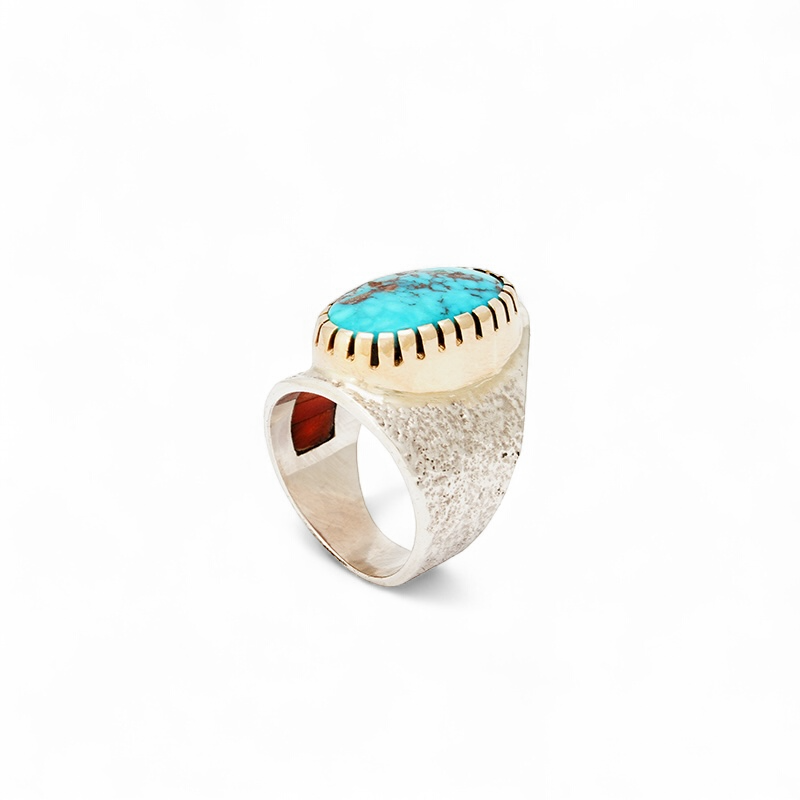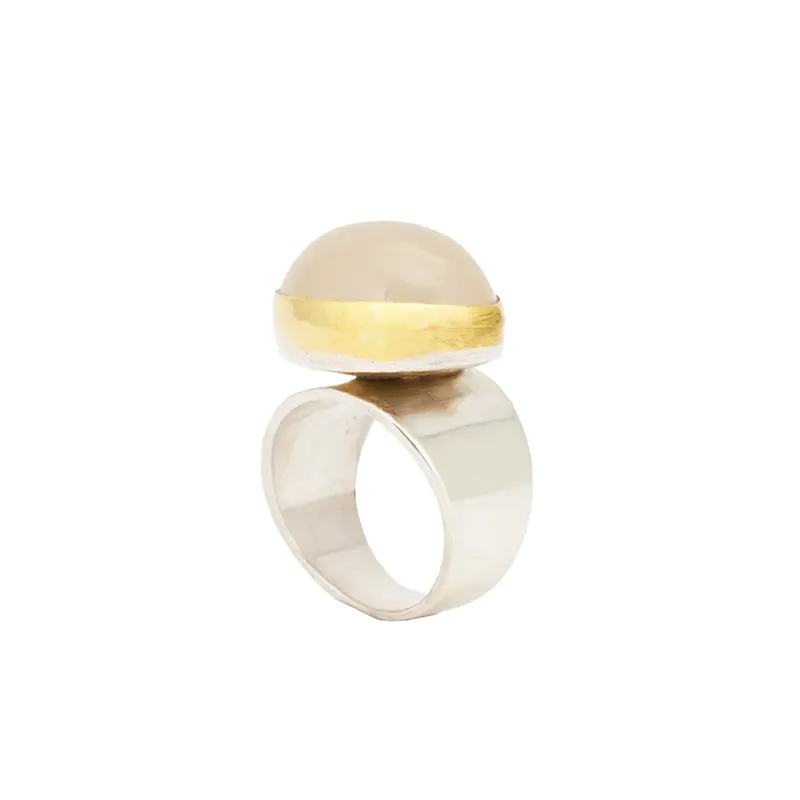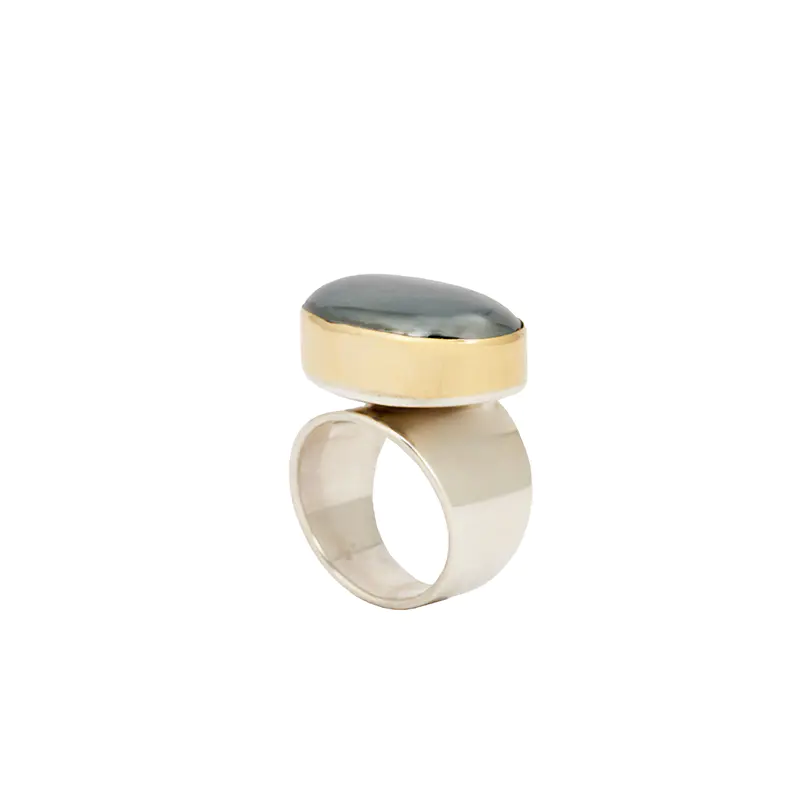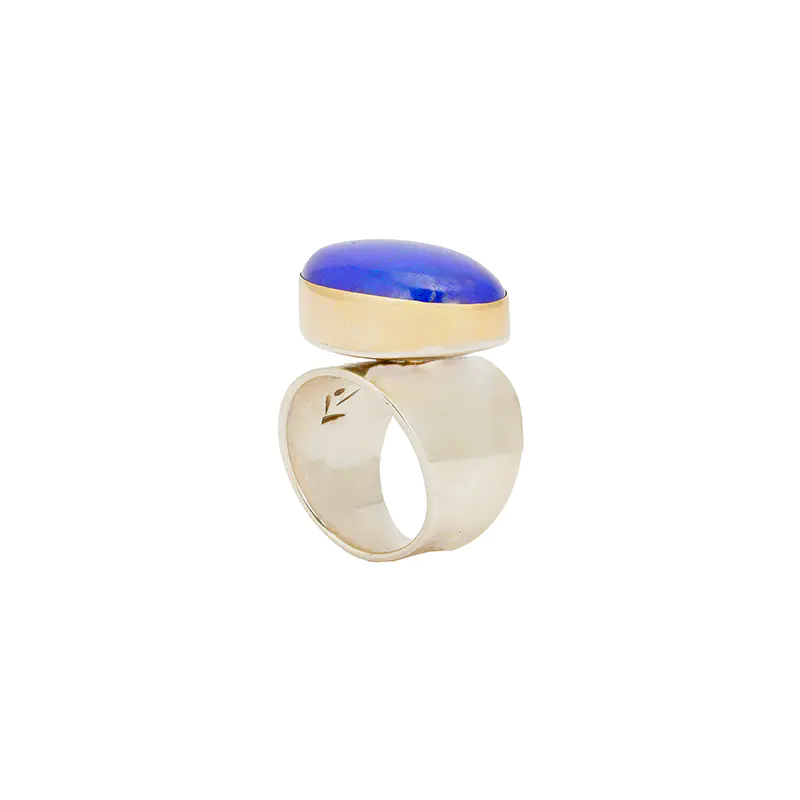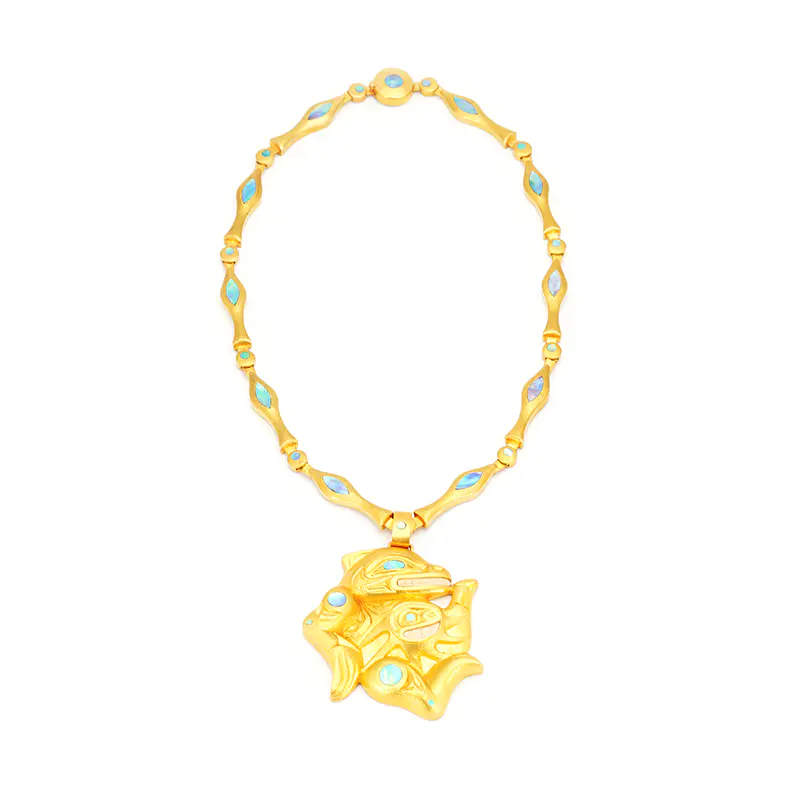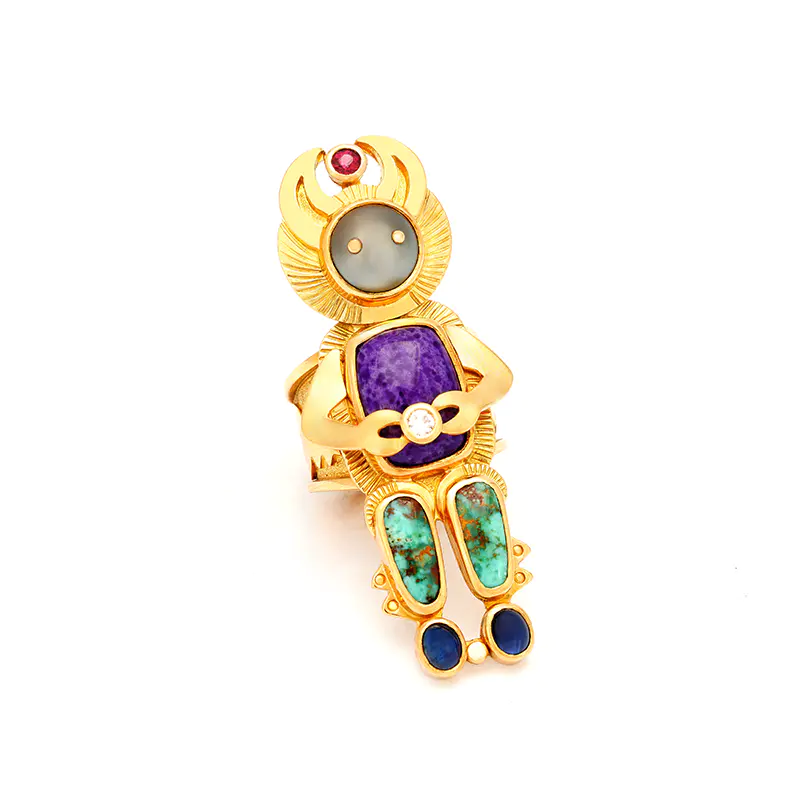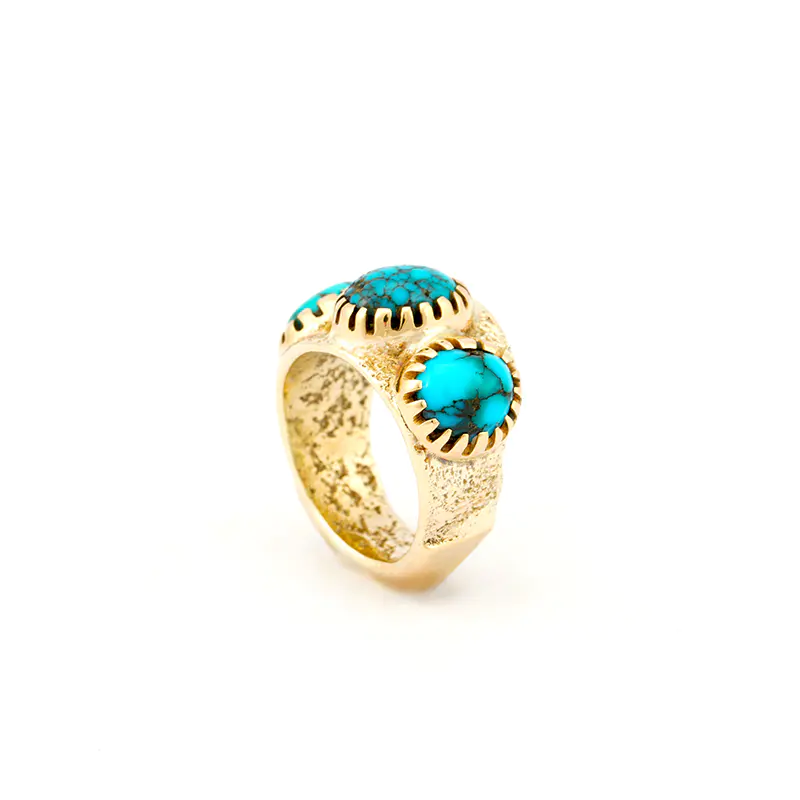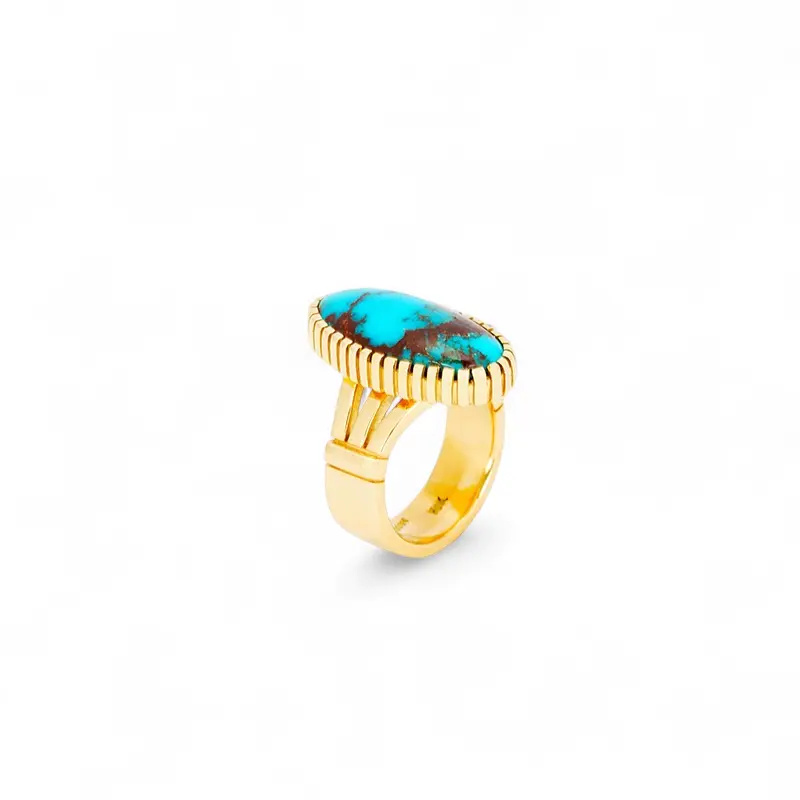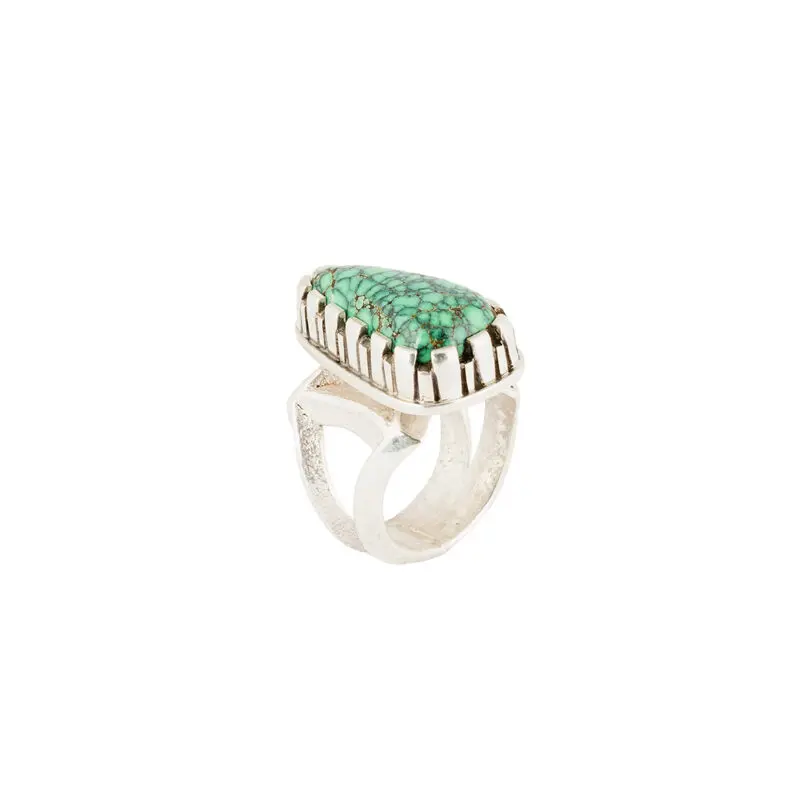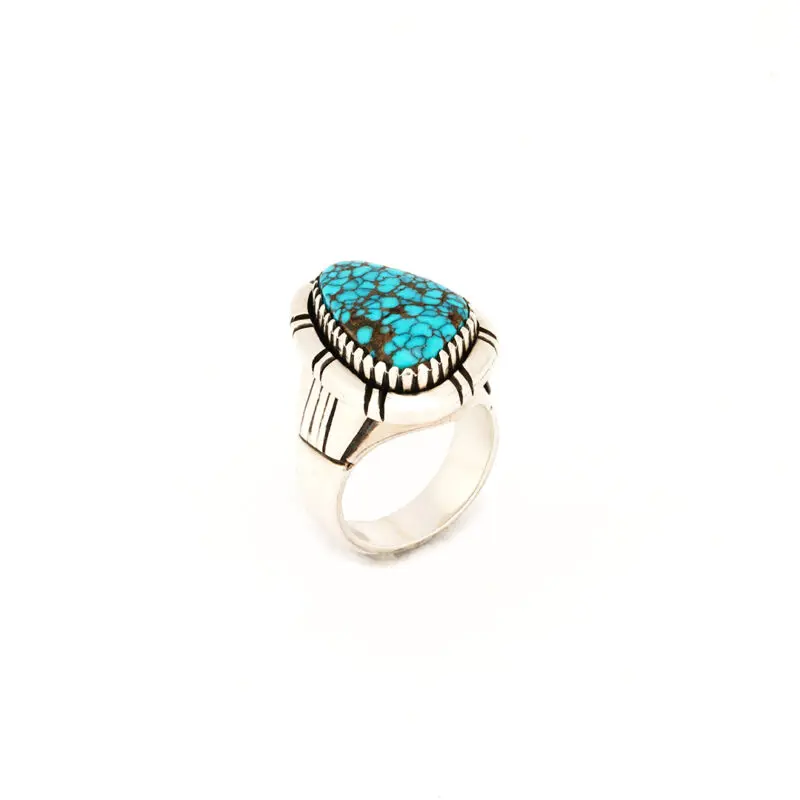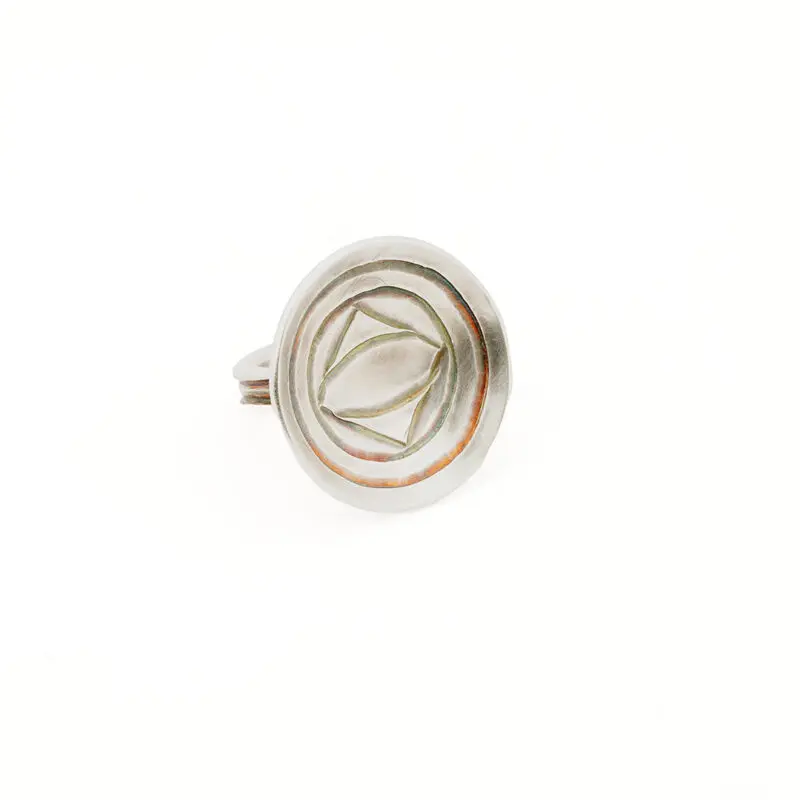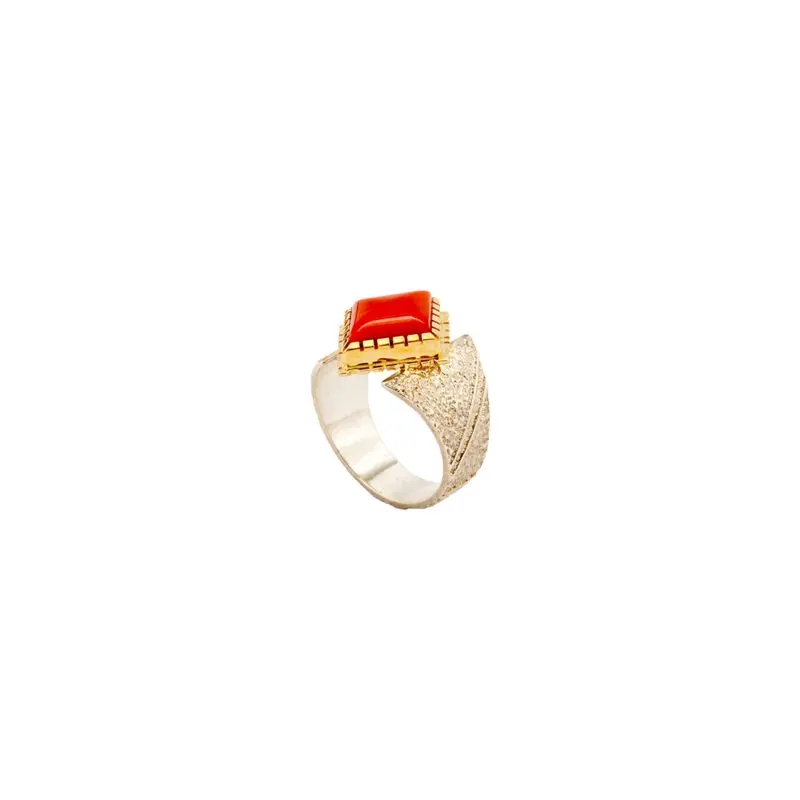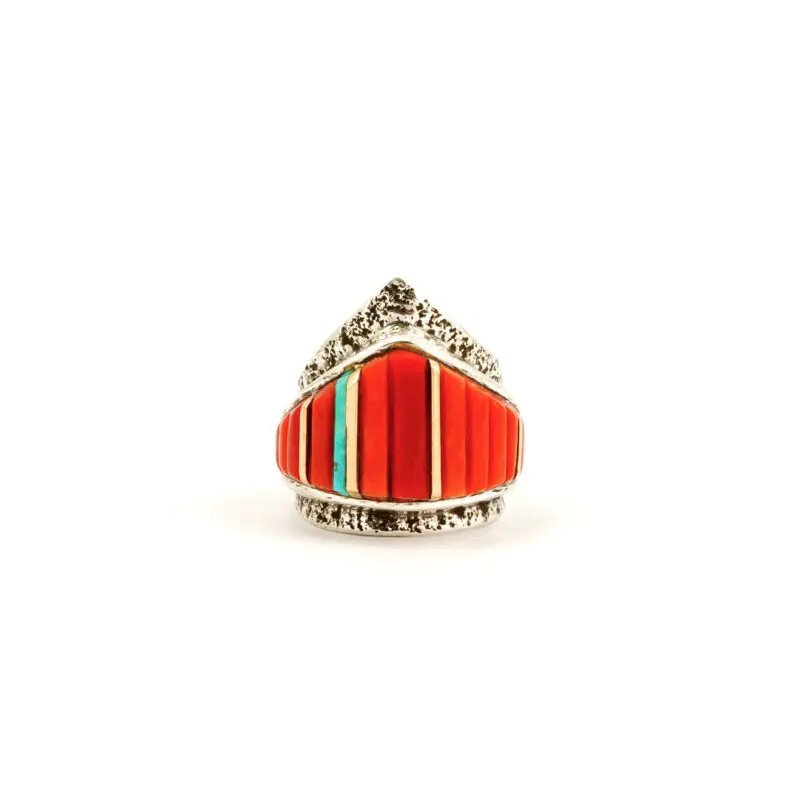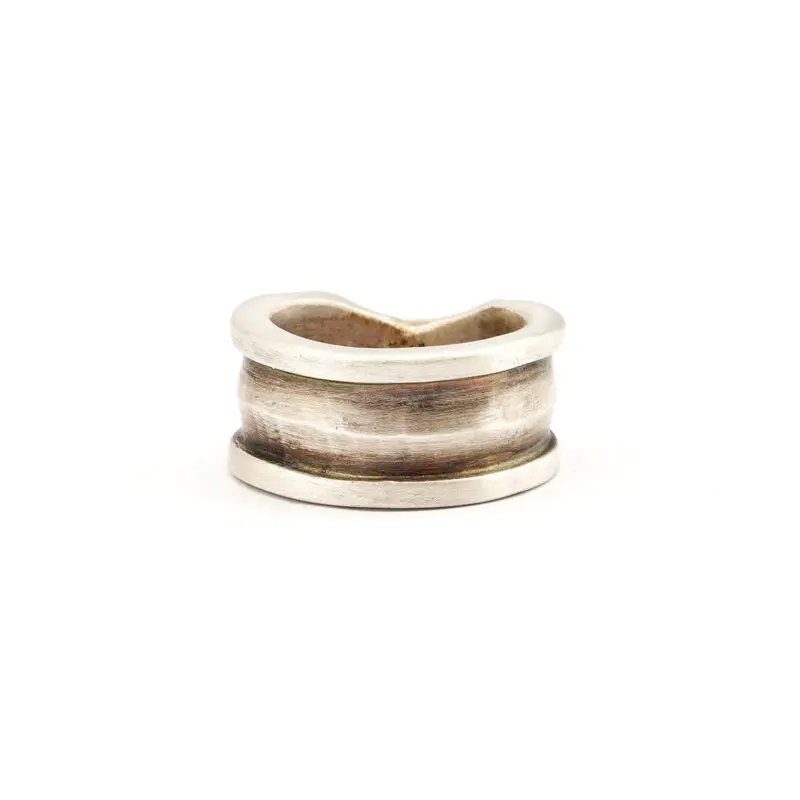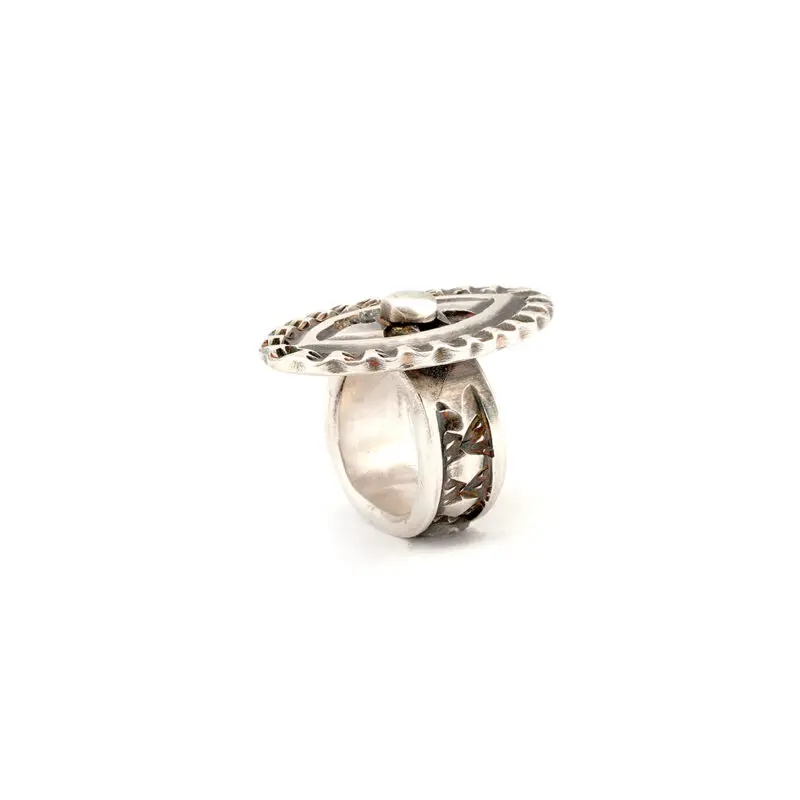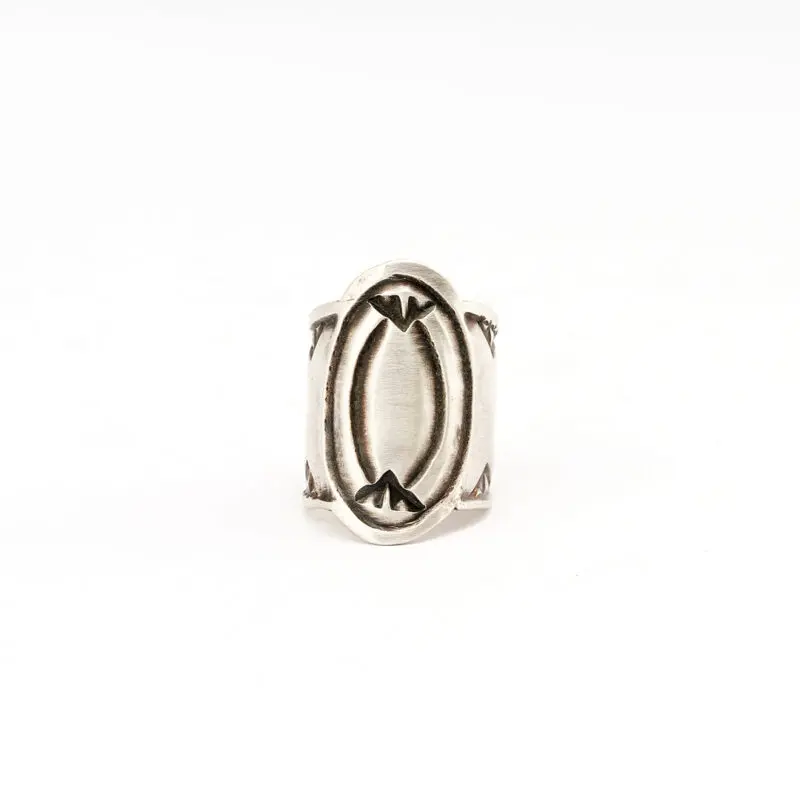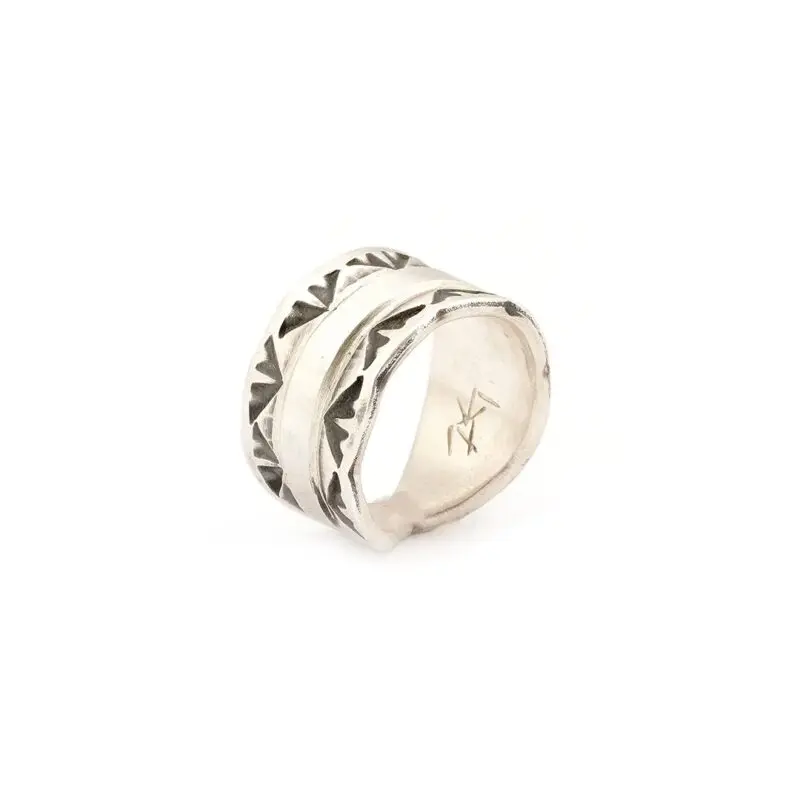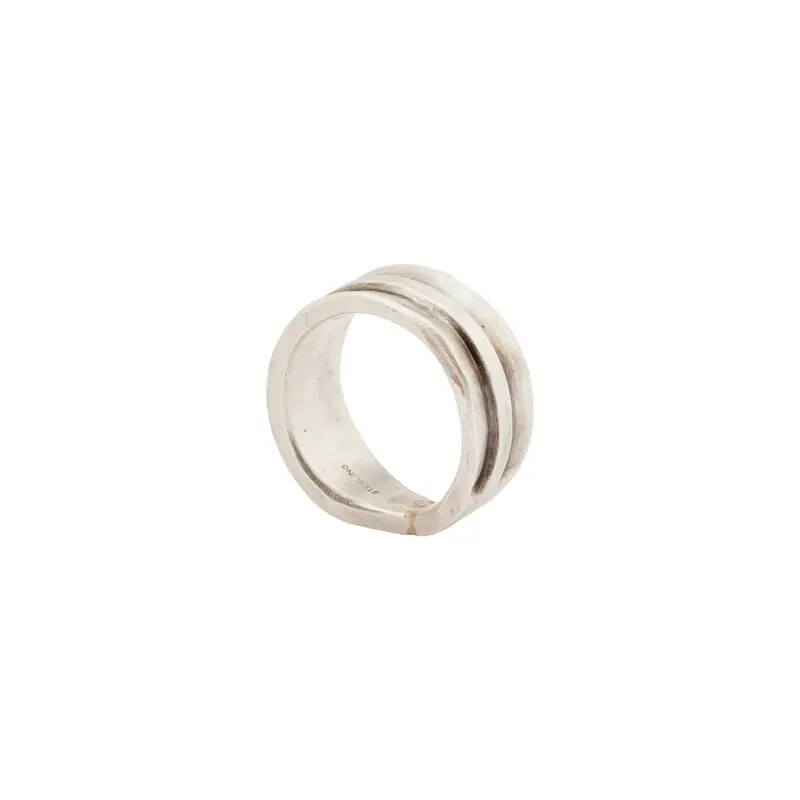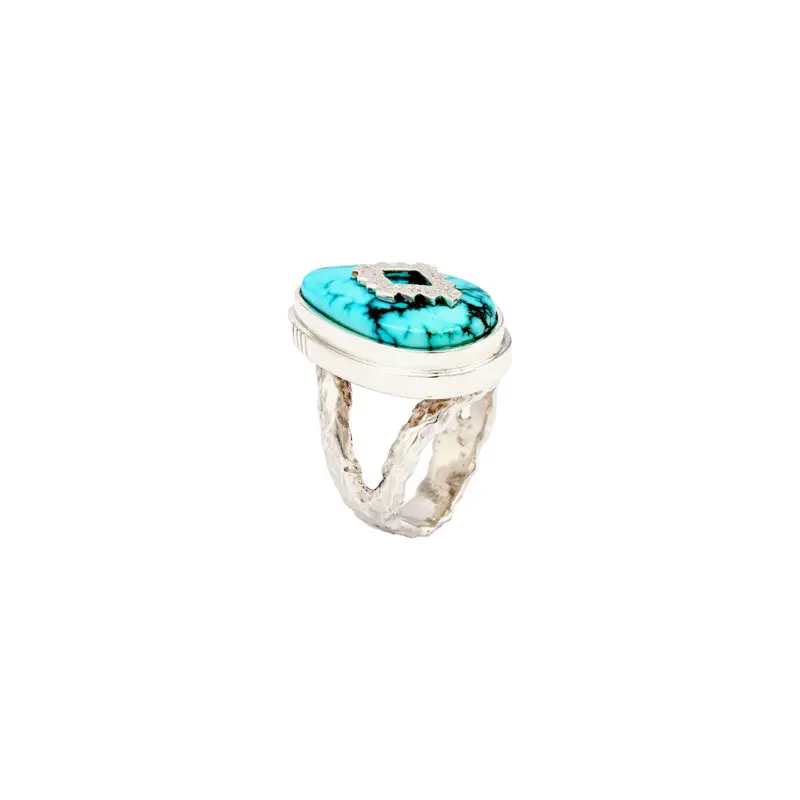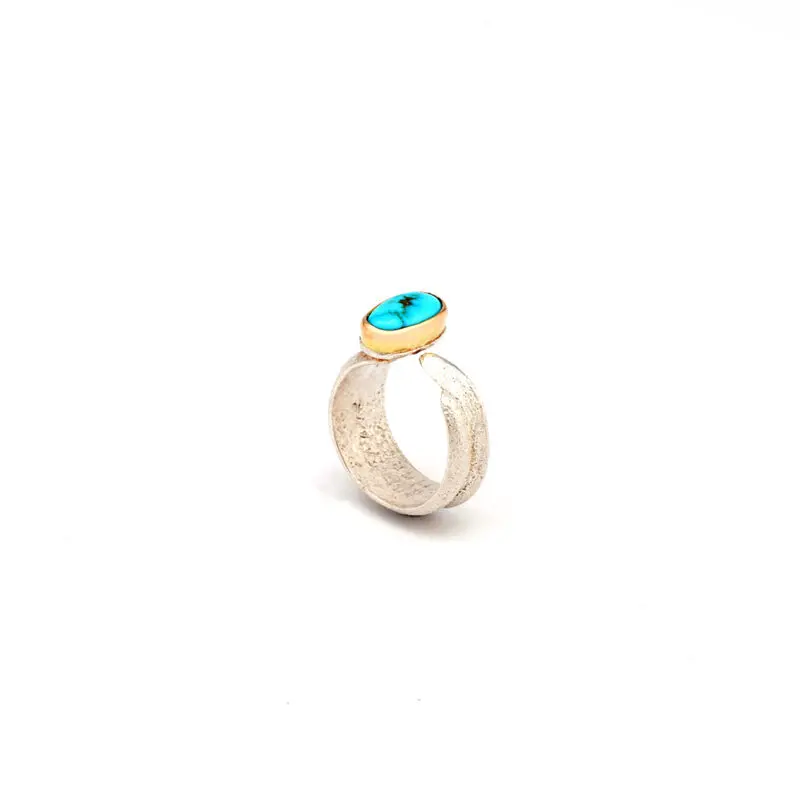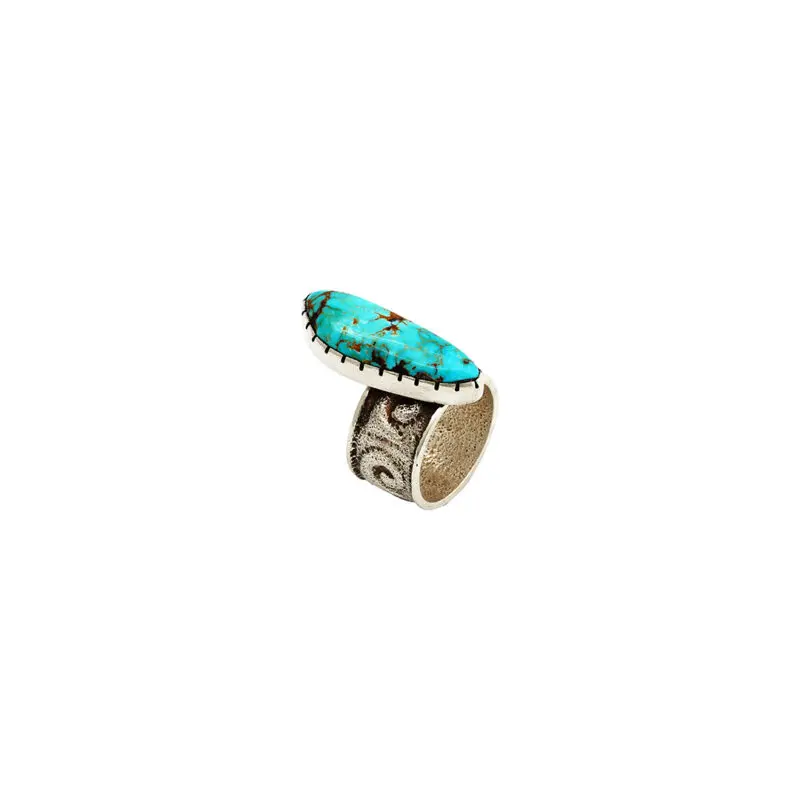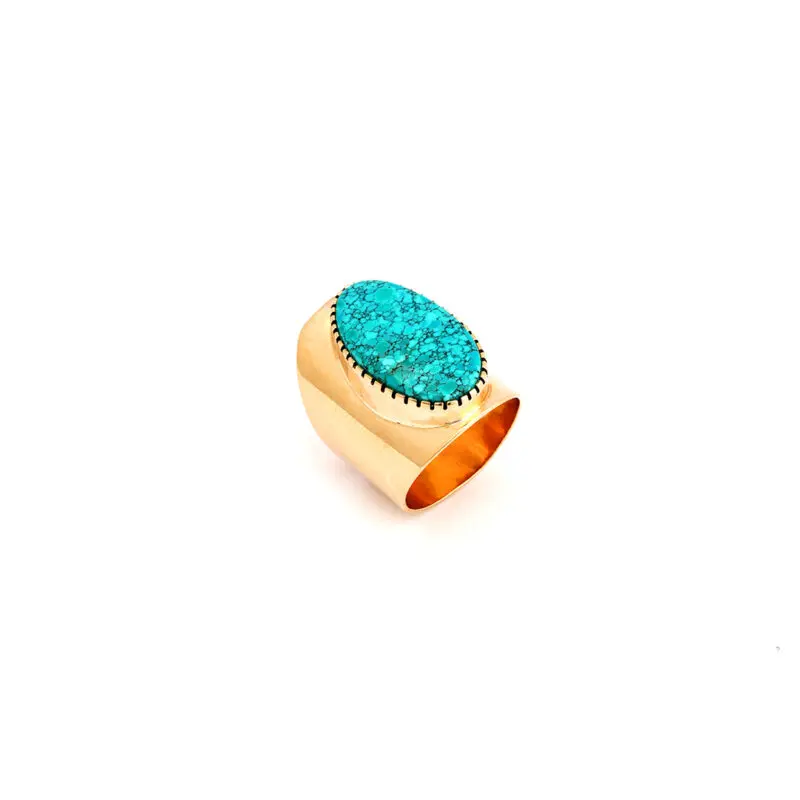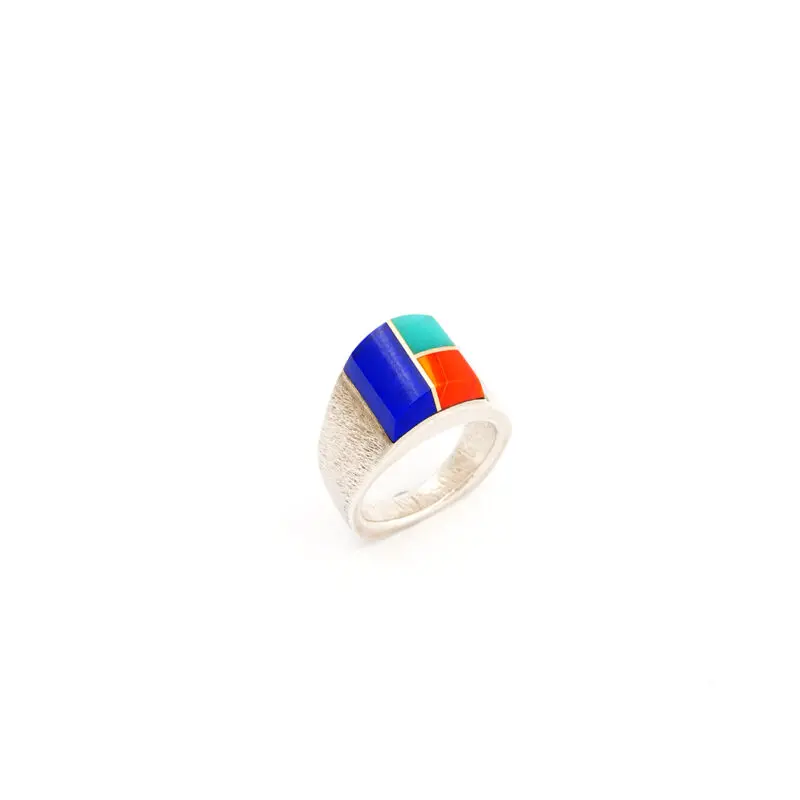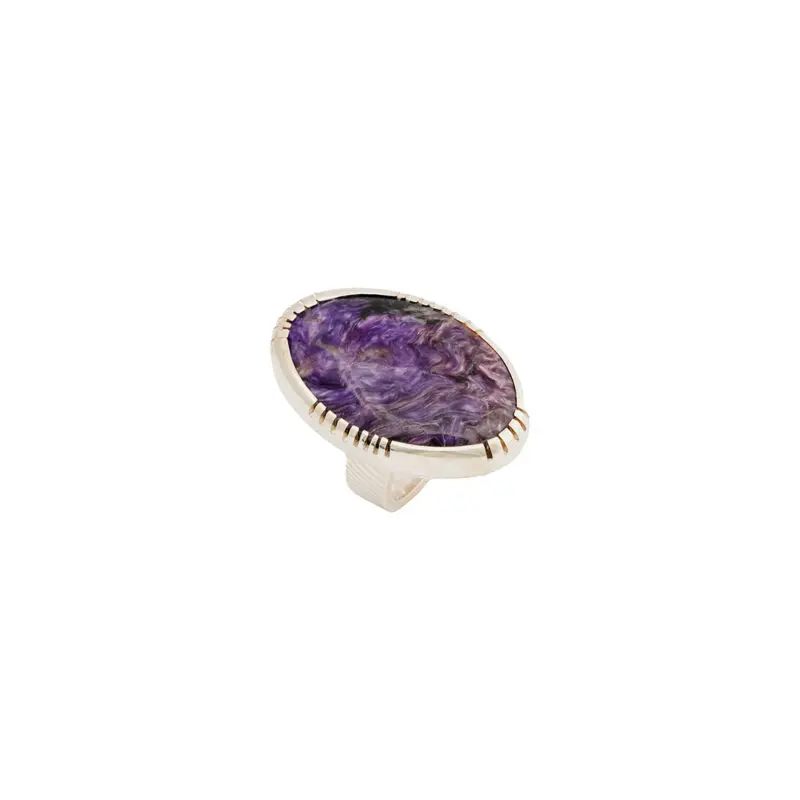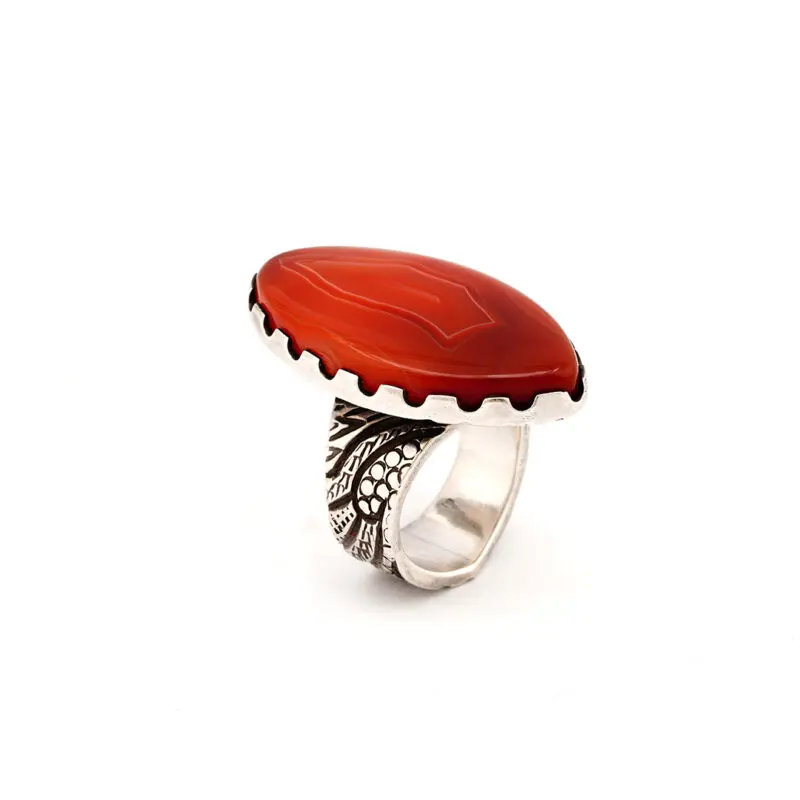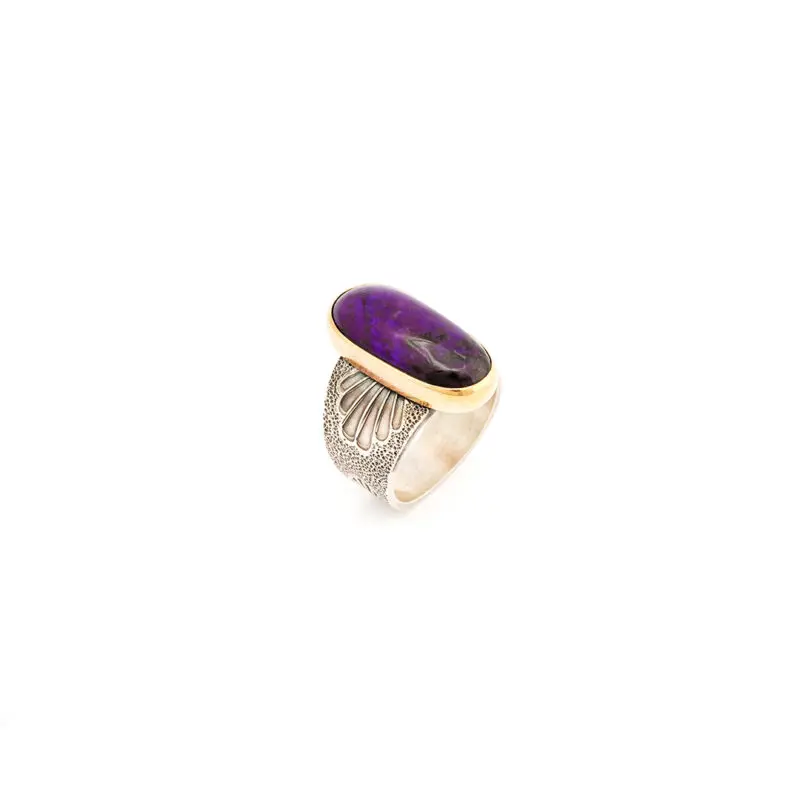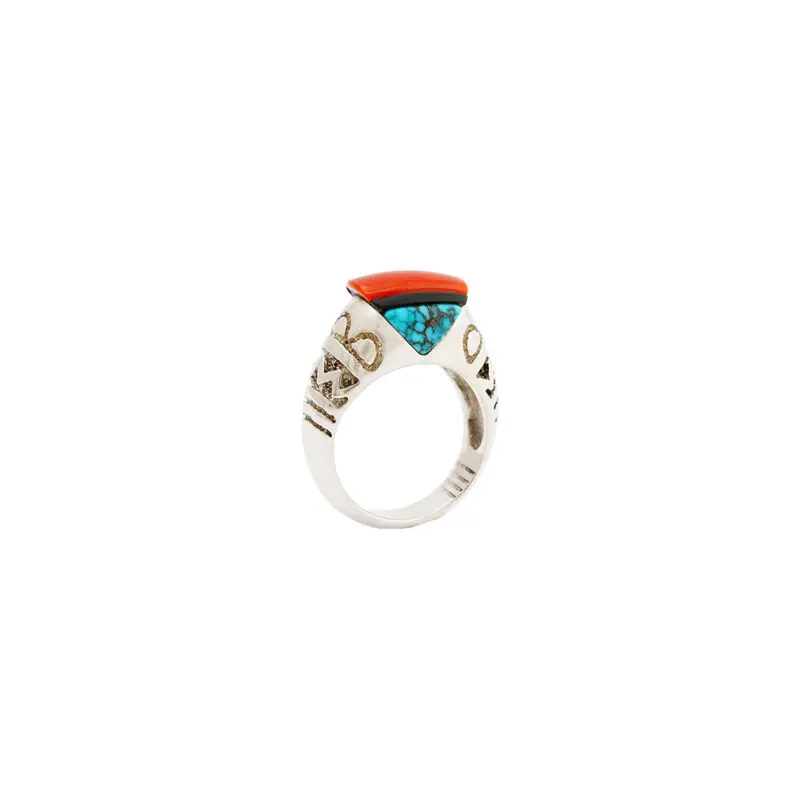Rings
The History of American Indian Rings: From Vintage Traditions to Contemporary Artistry
American Indian rings are more than adornments—they are enduring symbols of culture, identity, and artistic legacy. Spanning generations, these rings reflect the dynamic creativity of Native jewelers, whose techniques and designs have evolved while staying deeply rooted in tradition.
Vintage American Indian Rings, often dating from the early to mid-20th century, represent a golden era of craftsmanship. Silversmithing techniques introduced in the late 1800s by artists like Atsidi Sani of the Navajo laid the groundwork for a flourishing jewelry tradition. By the 1930s and 1940s, Native silversmiths—particularly among the Navajo, Zuni, and Hopi—were blending traditional motifs with new materials, such as turquoise, coral, jet, and shell. Zuni artists became renowned for their intricate stone inlay and petit point work, while Navajo jewelers excelled in bold, sculptural silverwork. Hopi artists, following the innovations of the Hopi Silvercraft Cooperative Guild in the late 1940s, developed a distinctive overlay technique that remains iconic today.
As we move into the contemporary era, American Indian rings have expanded in both form and meaning. Today’s Native jewelers continue to honor their heritage while pushing boundaries—experimenting with new materials, minimalist designs, and conceptual approaches. Artists like Charles Loloma revolutionized the field in the 20th century by incorporating gold, exotic stones, and architectural forms, setting the stage for a new generation of visionary designers. Contemporary masters carry that spirit forward, creating rings that challenge expectations while maintaining a deep respect for tradition.
At Faust Gallery, we are proud to showcase a curated selection of both vintage and contemporary American Indian rings. Each piece is a testament to the enduring artistry and cultural resonance of Native jewelry—a legacy that continues to inspire collectors and admirers around the world.
-
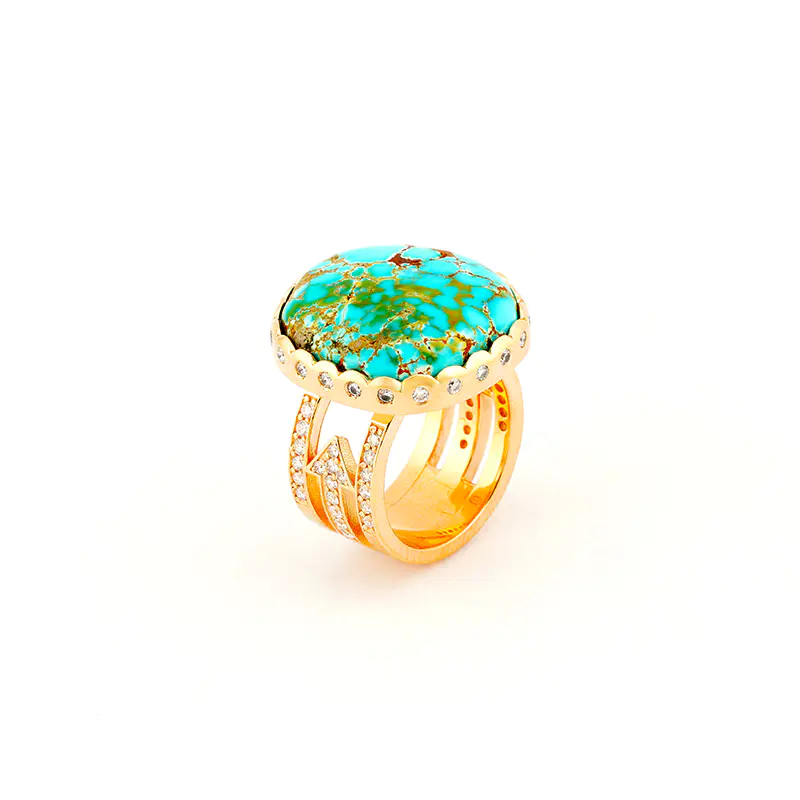
Monongye, Bo 14K Gold Dimaond Ring With Turquoise
$7,200.00 Add to cart -

Monongye, Bo 14K Gold Morenci And Diamond Ring
$7,500.00 Add to cart -

Monongye, Bo 14K Gold Turquoise And Diamond Ring
$7,650.00 Add to cart -

Benally, Kee Joe Black Web #8 Turquoise Ring
$3,500.00 Add to cart -

Yazzie, Raymond Sterling Silver Rings With Lone Mountain Turquoise
$5,000.00 Add to cart -

Vintage 14K Gold Lander Blue Turquoise Ring
Read more -

Yazzie, Raymond Sterling Silver Lone Mountain Flower Ring
$5,000.00 Add to cart -

Pete, Curtis Sterling Silver Demali Spider Ring
$1,850.00 Add to cart -

Wallace, Denise Sterling Silver Face With Mask Ring
$2,750.00 Add to cart -

Yazzie, Lee 14K Gold Coral Ring
$12,000.00 Add to cart -

Loretto, Phil Gold Inliad Mask Ring
$7,500.00 Add to cart -

Willie, Wes Sterling Silver Inliad Yei Mask Ring
$3,750.00 Add to cart -

Yazzie, Raymond Sterling Silver Inlaid Caterpillar Ring
$16,000.00 Add to cart -

Vintage Ring With Black Web #8 Turquoise
$3,500.00 Add to cart -

Yazzie, Raymond Gem-Quality Lone Mountain Sterling Silver Ring
$30,000.00 Read more -

Loloma, Charles Sterling Silver Tufa Cast Turquoise Ring With Inside Inlay
Read more -

Rawdin, Kim Silver Moonstone Ring
$1,100.00 Add to cart -

Rawdin, Kim Hematite Ring
$1,100.00 Add to cart -

Rawdin, Kim Silver Lapis Ring
$1,100.00 Add to cart -

Neel, David 22K Gold Otter & Urchin Necklace, Ring And Earring Set
Read more -

Adams, Victoria 22K Gold Figure Ring
$25,000.00 Add to cart -

Loloma, Charles Gold Tufa Cast Ring With Turquoise
$12,000.00 Add to cart -

Agoodie, Craig 18K Gold Ring With Bisbee Turquoise
$6,500.00 Add to cart -

Little, James Sterling Silver Ring With Inlay
$1,900.00 Add to cart -

Little, James Multi-Inlay Sterling Silver Ring
$1,900.00 Add to cart -

Little, James Sterling Silver Ring With Turquoise
$2,000.00 Add to cart -

Rebecca Begay Sterling Silver Sugilite Ring
$400.00 Add to cart -
Sale!

Tim Herrera Sterling Silver Turquoise Ring
Original price was: $700.00.$500.00Current price is: $500.00. Read more -

Julian Lovato Sterling Silver Ring With Indain Mountain
Read more -
Sale!

Redsun Dragon Medalallion Ring High Polish
Original price was: $495.00.$300.00Current price is: $300.00. Add to cart -

James Faks Sterling Silver Basket Ring
$325.00 Add to cart -

Ric Charlie Sterling Silver Ring With Coral and Gold
$4,500.00 Add to cart -

Charles Loloma Sterling Silver Tufa cast Inlaid Ring
$11,500.00 Add to cart -

James Faks Sterling Silver Chiseled Ring
$400.00 Add to cart -

James Faks Sterling Silver Heavy Hammered Ring
$450.00 Add to cart -

James Faks Sterling Silver Hammered Ring
$400.00 Add to cart -

James Faks Sterling Silver Ring With Design
$400.00 Add to cart -

James Faks Sterling Band Ring
$400.00 Add to cart -

James Little Turquoise Silver Ring
$2,200.00 Add to cart -

Cheyenne Harris Tufa Cast Silver Turquoise Ring
$1,500.00 Add to cart -

Harvey Begay Turquoise Sterling Silver Ring
$2,200.00 Add to cart -

Larry Golsh 14K Lone Mountain Turquoise Ring
$6,000.00 Add to cart -

Duane Maktima Sterling Silver Inlaid Ring
$1,200.00 Add to cart -

Tim Blueflint Sterling Silver Charoite Ring
$800.00 Add to cart -

Jarad Chavez Jasper Sterling Silver Ring
$1,500.00 Add to cart -

Tim Blueflint Sterling Silver Sugilite Gold Ring
$2,650.00 Add to cart -

James Little Sterling Silver Inlaid Ring
$2,600.00 Add to cart -

Darryl Dean Begay Sterling Silver Lone Mountain Ring
$6,500.00 Add to cart

